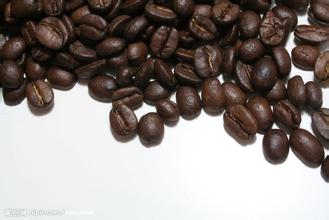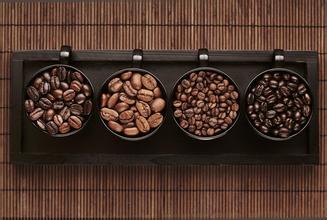Bolivian Snow vein Manor Coffee Grinding degree, taste and flavor description manor introduction
The advantage of Bolivian coffee lies in its high altitude and excellent varieties of coffee, where the traditional Tibica and a small amount of Kaddura are highly valued in the world market. In the past, coffee trees in Bolivia used to act as hedges and ornaments around the garden. Real commercial production began in the early 1950s. The coffee industry in Brazil was badly damaged by the great frost in 1957, while Bolivia (Bolivia) benefited and developed rapidly. Bolivian coffee is grown at an altitude of 18000 to 2670m, and the Arabic washed coffee beans are exported to Germany and Sweden, which are not the best today, and Bolivia has about 12000 hectares of coffee plantations with a bitter taste. these coffee plantations are generally located in remote areas, coupled with Bolivia is a landlocked country, so There is always no way for the country to ship coffee of export quality in the right season.
Because of the importance of transportation and coffee production to people's livelihoods, Coca, like several other South American countries, is more attractive to people living in poor areas.
According to Fuligao coffee experts, the original Bolivian coffee will taste a little bitter, but the quantity and quality of coffee have improved because the new coffee tree has replaced the old one. With the improvement of the country's coffee industry, more of its coffee beans will enter the world coffee market Bolivia is a landlocked country in South America, neighboring Brazil, Chile, Argentina, Peru and Paraguay. Its main topography is the plateau, with an average elevation of more than 3000 meters, making it the highest plateau country in the world. Bolivia, with a temperate climate, is rich in natural resources and is known as a "donkey sitting on a gold mine". In addition to the famous mineral deposits, there are the ruins of the Inca Empire, which perished after the Spanish invasion, and the second largest natural gas field in South America after Venezuela. Of course, the most famous is the Uyuni salt marshes, and the coffee in Bolivia is also excellent!
Traditional Typica species are mostly grown on high mountains with rich volcanic soil more than 2000 meters above sea level. The source of water for coffee treatment also comes from melted snow water in the mountains, which is completely pollution-free. Because of its high altitude and low temperature all the year round, the Typica species here is not as big as that of neighboring countries, but it has more diverse fragrances and fuller sweetness. Clean sweet malt, delicate and elegant aromas of orange, red jujube and lemon peel. In the aftertaste, the sweetness and aroma are very long-lasting. Most of the coffee in Bolivia is of mediocre quality, but in recent years, the production of boutique coffee has developed rapidly and there have been a lot of pretty good beans. In recent years, the COE (Cup of excellence) system, which was first implemented in Brazil, has gradually become popular. Bolivia has also introduced this system, which, on the one hand, can stimulate the enthusiasm of coffee farmers, on the other hand, it is also to improve the quality of coffee. COE beans are better than ordinary coffee in both raw and roasted coffee.
The aroma of Bolivian coffee is rich and unique, both the aroma of ground beans and the aroma of coffee are obviously rich, similar to the mixture of flower and fruit aroma, impressive.

Important Notice :
前街咖啡 FrontStreet Coffee has moved to new addredd:
FrontStreet Coffee Address: 315,Donghua East Road,GuangZhou
Tel:020 38364473
- Prev

Introduction to the unique and strong aroma of Costa Rican Fenghuang Manor Coffee Grinding degree
Coffee was introduced into Costa Rica from Cuba in 1729. Today, its coffee industry is one of the well-organized industries in the world, with a yield of 1700 kg per hectare. Costa Rica has only 3.5 million people but 400m coffee trees, and coffee exports account for 25 per cent of the country's total exports. The volcanic soil of Costa Rica is very fertile and well drained, especially in the central part.
- Next

Introduction to the flavor description and taste characteristics of the sour coffee estate in Arusha, Tanzania
Tanzania covers an area of 945087 square kilometers, of which Zanzibar is 2657 square kilometers. It consists of the mainland, Zanzibar and more than 20 small islands. Located in eastern Africa and south of the equator, the continent is bounded by the Indian Ocean to the east, Zambia, Malawi and Mozambique to the south, Rwanda, Burundi and the Democratic Republic of the Congo to the west, and Kenya and Uganda to the north. The coastline of the mainland is 840 kilometers long.
Related
- Does Rose Summer choose Blue, Green or Red? Detailed explanation of Rose Summer Coffee plots and Classification in Panamanian Jade Manor
- What is the difference between the origin, producing area, processing plant, cooperative and manor of coffee beans?
- How fine does the espresso powder fit? how to grind the espresso?
- Sca coffee roasting degree color card coffee roasting degree 8 roasting color values what do you mean?
- The practice of lattes: how to make lattes at home
- Introduction to Indonesian Fine Coffee beans-- Java Coffee producing area of Indonesian Arabica Coffee
- How much will the flavor of light and medium roasted rose summer be expressed? What baking level is rose summer suitable for?
- Introduction to the characteristics of washing, sun-drying or wet-planing coffee commonly used in Mantenin, Indonesia
- Price characteristics of Arabica Coffee Bean Starbucks introduction to Manning Coffee Bean Taste producing area Variety Manor
- What is the authentic Yega flavor? What are the flavor characteristics of the really excellent Yejasuffi coffee beans?

